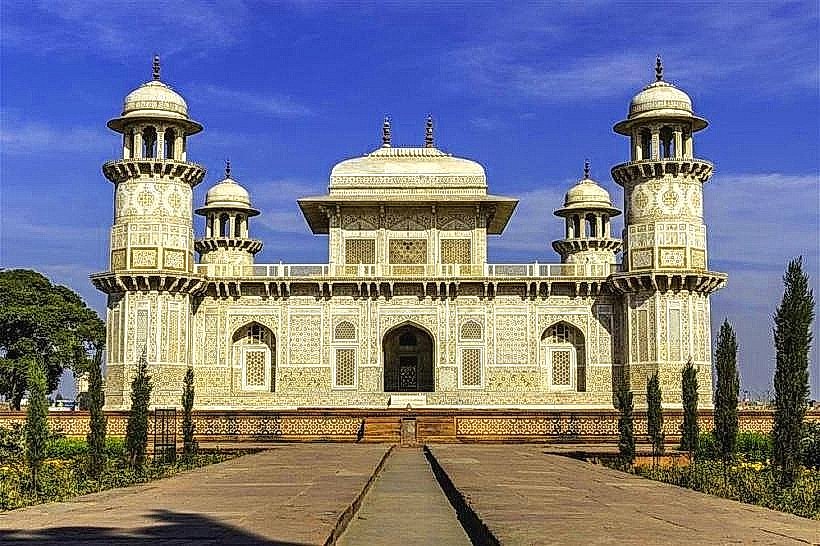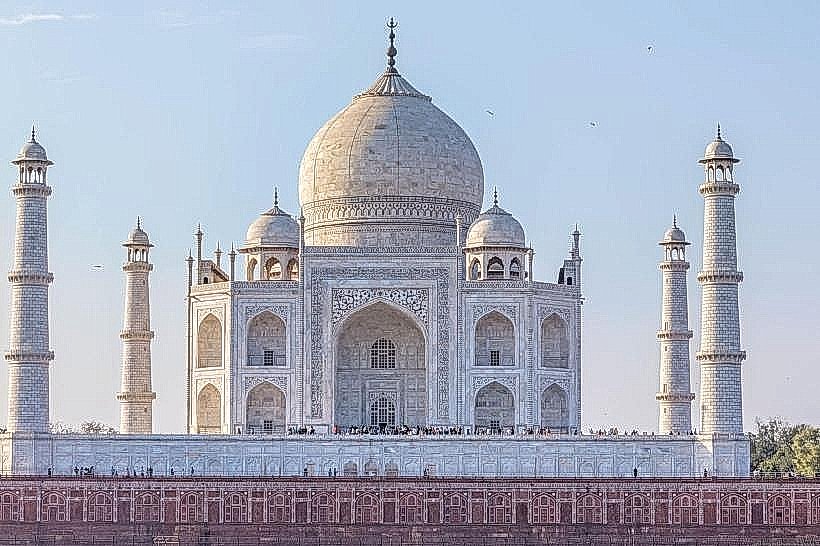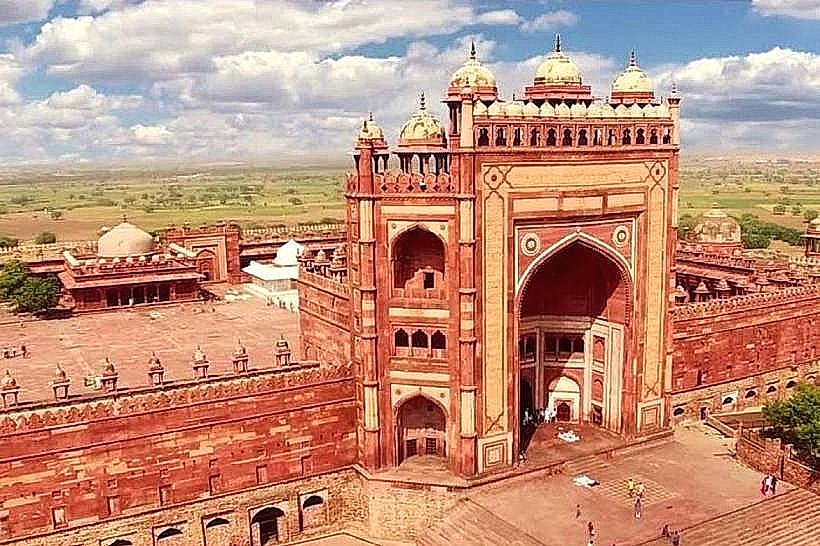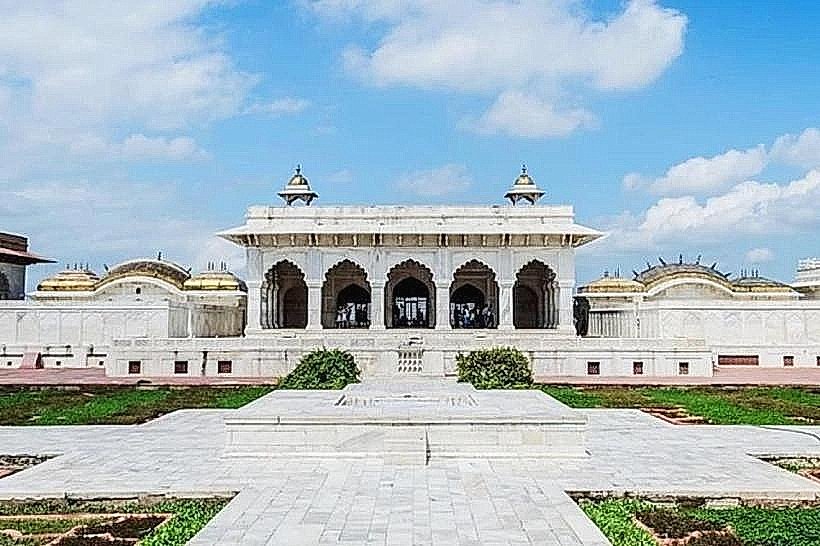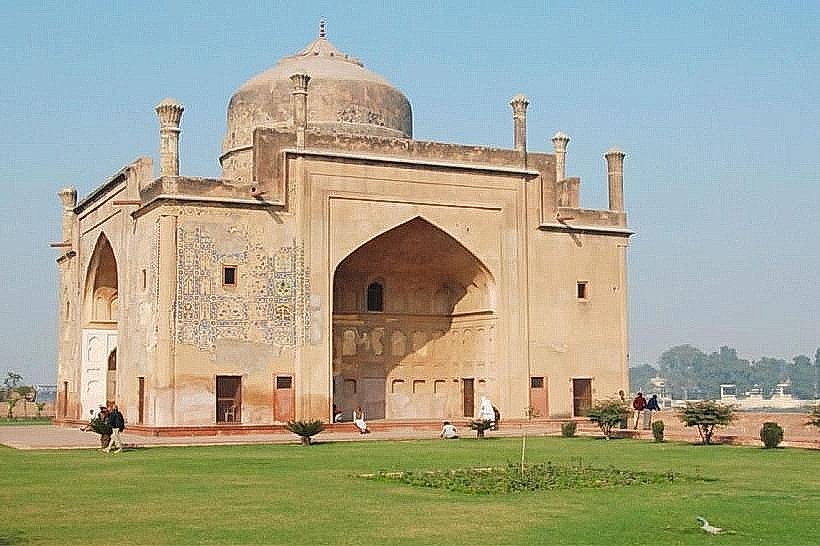Information
Landmark: Jama Masjid of AgraCity: Agra
Country: India
Continent: Asia
Jama Masjid of Agra, Agra, India, Asia
Overview
The Jama Masjid of Agra, often called the Friday Mosque, stands as one of northern India’s grandest and most admired mosques, its red sandstone walls glowing warmly in the afternoon sun, subsequently just a short saunter from Agra Fort, Emperor Shah Jahan commissioned it in 1648 and saw it finished two years later, while he was also raising the luminous Taj Mahal.The mosque stands at the heart of the city’s faith, its graceful domes and carved stone arches showing the elegance of Mughal design, simultaneously the mosque’s architecture features red sandstone walls highlighted by crisp white marble, a pairing that catches the eye and feels perfectly balanced.The main prayer hall sits beneath a sweeping central dome, with two smaller ones tucked close beside it, and slender minarets climbing from each corner like pale stone towers against the sky, in turn arched doorways, fine marble inlay, and intricate carvings cover the façade, each line and curve revealing the balanced geometry that defines Mughal design.The courtyard stretches wide, its stone floor warm under the midday sun, large enough to hold thousands of worshippers during Friday prayers and festivals, after that the courtyard includes water channels and washing areas, blending utility with beauty and showing how Islamic architecture weaves function into its design.The Jama Masjid still hums with daily prayers, standing as a living emblem of Agra’s deep Islamic roots, moreover it shows Shah Jahan’s support for religious and architectural works beyond the grand Taj Mahal, revealing how the Mughals prized both devotion and graceful beauty-like the quiet symmetry of a marble courtyard at dawn.During the Mughal period, the mosque stood at the heart of the city’s spiritual and social life, its courtyard often filled with voices rising in prayer and conversation, moreover visitors can wander through the wide courtyard, trace the cool marble and warm sandstone with their fingers, and take in the balanced lines of the architecture from every angle.Since the mosque sits just a short meander from Agra Fort, you can explore both in one trip and glimpse how the Mughals shaped their city’s streets and sacred spaces, furthermore in the soft light of morning or the glow before dusk, photography catches how sun and shadow dance across the red sandstone and cool white marble, to some extent Visitors must wear respectful clothing, and many find a calm hush settling over them as they watch prayers or wander beneath the quiet shade of the courtyard trees, what’s more the mosque’s atmosphere hums with quiet grandeur, a stillness that seems to echo beneath its cool marble arches.Echoes drift beneath the arches as footsteps tap across the cool stone courtyard, and the soft call to prayer lingers in the air, inviting quiet reflection, on top of that its graceful architecture, wide open courtyards, and deep sense of history stir awe and quiet respect, turning it into one of Agra’s most unforgettable landmarks.The Jama Masjid in Agra stands as a vivid emblem of Mughal faith and artistry, blending graceful arches, practical layout, and centuries of history into the city’s bustling heart.
Author: Tourist Landmarks
Date: 2025-11-18



